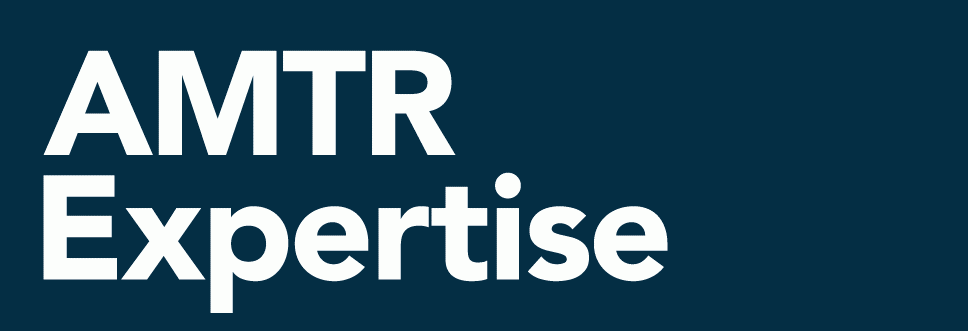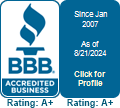California Compliance Surcharge
Thinking about California often brings to mind thoughts of sunshine and surfing; however, if you’re in the business of shipping goods, the new California Compliance Surcharge being billed by some LTL carriers is probably first and foremost in your thinking. As of May, two prominent LTL carriers, Old Dominion Freight Line and ABF, added surcharges to the majority of freight invoices for shipments originating from or destined to the state of California. Carriers have advised that these charges are necessary to offset the state’s higher operating costs and stricter regulations such as requiring trucking companies to pay drivers for rest breaks and time spent refueling.
These new charges can be found in the carriers’ rules tariff. For ODFL, see tariff ODFL 100-K Item 375 effective 5/2/2016–the charge is $5.95 per shipment. For ABF, see tariff ABF 111-AI Item 162 effective 3/1/2016–the charge is $5.92 per shipment.
These surcharges do not come without complaint as they can add up quickly for those that do business in and out of California. Industry allies in Congress have introduced bills aimed at preventing states from applying regulations like California’s to truckers. Some view these additional charges as the trucking companies’ way of supplementing revenue in a weakening freight market. If this news isn’t surprising enough, there is even talk
about suggesting similar charges such as a surcharge for shipments going to the Northeast where parking is severely limited and costly to truckers.
With all these changes, you need experts working on your behalf to ensure you get what you pay for. AMTR’s expert auditors keep on top of all the freight news so you don’t have to.
When a tariff is replaced by a completely new tariff errors can and will occur. As an example, in a recent audit of one of our client (shipper) accounts, it was discovered that a tariff which had been used for many years had been reissued into a new tariff. The new tariff was published and included discounted rates for one month to ease the transition. In the process of auditing for the client, it was discovered that transition rates had been loaded into the shipper’s freight rating system several months late. This resulted in hundreds of invoices being overpaid. Furthermore, it was found that one of the lanes was published at a considerably higher rate after the one month transition period. AMTR intervened for the client and contacted the railroad to determine the intent for such an increase and, in the process, confirmed that the higher published rate was actually an error (which was corrected in later tariff updates).
The moral of the story is that if you don’t have in-house experts examining your freight charges at this level of detail, then you are probably experiencing unnecessary overcharges. Let AMTR do it for you!
Let’s say you have had a long-standing contract involving many carriers for a through rate. One of the carriers has informed you that they are no longer able to be a part of that through rate. As such, your product and marketing managers must begin to negotiate new rates for that carrier’s portion of a route. When the negotiations conclude, the original contract must also be re-written with the new route and rates. These activities are time consuming, and often while negotiations are still underway, the original contract expires.
In this “gap” between the end of an old contract and the beginning of a new one, carriers must continue to invoice shippers and shippers must continue to pay their freight. As a result of the “gap”, many different scenarios that are not beneficial to shippers may ensue. Invoicing will default to Rule-11 tariff rates. If a point-to-point tariff rate is not available, a high-mileage scale might apply.
If a tariff rate does not exist, the carrier may update it to include one or provide a one-time quote or spot quote temporarily. Customers might even negotiate a temporary rate of their own to be billed collect. Such a “gap” may last a few days or a few months, but when the new contract is finally put in place, carriers will sometimes honor the new negotiated rates back to the date of original contract expiration.
These typically are complex situations to identify but not for the experts at AMTR. Let us review your freight to ensure you never pay more than what was intended.
Most knowledgeable & hands-on for clients
For as long as AMTR has been in existence, our business model has put human, transportation experts at the center of our freight auditing services. Our team of auditors are arguably the most knowledgeable in the industry; each and every one having successfully passed a rigorous apprentice and training program as well as completed required certifications in transportation law, motor carrier operations, etc. Does this mean that AMTR only uses brainpower and not technology to accomplish audits? Absolutely not! We have a robust technology architecture which we call “Smart Tech” and time-tested data mining and overcharge discovery processes we call “Smart Net” that support our auditors in their work, but human auditors are always in the lead. At AMTR we use technology to augment our human experts not to replace them. As such, every client account gets human attention that results on a much more hands-on audit and a closer customer service relationship. Where automated freight audits based on pre-programmed algorithms can only identify the most standard errors, our human auditors get to know our clients and their freight operations on a deeper level which allows more extensive and higher-dollar overcharge recovery. When thinking about freight cost audits for your company get “Smart” and let the experts at AMTR work on your behalf!
The latest transportation funding bill, spearheaded by Sen. Susan Collins, includes a set 73-hour, seven-day work week limit provision for truck drivers. According to logisticsmgmt.com, “the legislation’s 73-hour cap does not make any changes to the current maximum mandatory hours a commercial truck driver can drive in a given week without taking a restart: 60 hours in 7 days and 70 hours in 8 days. Once a driver takes a 34-hour restart—the 73-hour cap precludes the possibility that any driver could drive after having worked 73 hours. In short, drivers have to take a break (34 hour restart) when they hit 60 hours in 7 days or 70 hours in 8 days.” This bill moved out of committee with a 30-0 vote and will be considered by the Senate towards the end of May.
Needless to say, the issue is of great concern to the trucking industry who contends that changes in truck driver hours of service should be based upon statistical evidence provided by the installation of the electronic logging devices (mandated by Congress to be installed by December 2017), rather than on a political decision made by Congress. The issue is so contentious that a group of trucking companies has taken the unusual step of urging Congress to delete the provision altogether.
Because the bill addresses broader issues, such as investments in the nation’s transportation infrastructure and other road safety provisions which are positive, lawmakers state that they are trying to keep the focus on the funding aspects of the bill.
The Heart of Texas Railroad, running 68 miles of track from Lometa, Texas to Brady, Texas is being purchased by an unnamed OmniTRAX, Inc. affiliate. The new name of the line will be Central Texas & Colorado River Railway, LLC and it plans to focus on aggregate, sand and cement customers.
According to Kevin Shuba, CEO of OmniTRAX, “as a distressed asset that can be turned around with our expertise, it’s right in our sweet spot.” He added, “we want to thank the sellers for their efforts in starting to implement a restructuring plan and making the closing of the transaction as smooth as possible.” Although the transaction is in progress, it remains subject to STB approval.
The LTL trucking industry faces many changes on a daily basis. Some of these changes involve the classification or re-classification of products, as governed by the Commodity Classification Standards Board (CCSB). The role of the CCSB is to evaluate proposals for establishing or amending the classification of commodities, commodity descriptions, classes, rules, packaging definitions, specifications and requirements. These classification-related provisions are then published in supplements and codified in the NMFC. As changes generated by the CCSB can be many, managing them can be time consuming and difficult. As such, how can you be sure your freight has not been impacted?
With AMTR on your side, you can be assured that none of these important changes will be missed. Our team of expert truck auditors review the CCSB Public Dockets Files regularly to stay on top of all the latest updates so you can be assured of getting the best freight rates possible.
Big Impacts of Small Data Errors
At AMTR, we view millions of freight bills every year. Given our 35+ year history, there is probably no billing mistake that we have not seen. Every section of a freight bill can contain incorrect data, and no carrier is immune to making such mistakes. As an example, we recently audited a Class I railroad bill with a waybill date of December 2016. That’s right—a bill from the future! In this case, all the error generated was a chuckle, but that is rarely the case.
Small errors can generate a big impact. Examples include wrong dates or cities generating wrong rates, and missing decimals for CWT rates leading to miscalculations. Such data errors are easily overlooked by accounting departments that simply do not know what to look for or by transportation departments that are just trying to keep a product moving.
AMTR freight auditors assume every bill has a mistake, so we scour each one to find them and recover the overcharges that result.
Surprise, Surprise, Surprise!
Shippers spend a significant portion of their time planning for and projecting freight costs. Rate engines will predict accruals; however, despite detailed planning on the front end, accessorial charges often creep in at the back end and create a surprising increase to overall freight spend. Some common examples of unpredictable accessorial charges include miscellaneous switching, diversions, demurrage, weighing and empty car moves for rail shipments. Charges for reconsignment, weight or description inspections, liftgate delivery, re-palletizing, capacity load and density minimum charge are some examples of accessorials commonly seen with motor carrier movements. Finally, accessorial charges for detention at the rail yard, repositioning and reweighing are possible for intermodal shipments. Even more disconcerting is the fact that invoices for such charges often bypass the normal TMS systems and get paid manually.
Unfortunately, there is rarely anything that can be done about such charges unless you have transportation experts like AMTR working on your behalf. We will not only verify the charges, but also offer suggestions how to avoid them in the future.
About More Than Just Recovering Money
As companies work hard to achieve supply chain efficiencies, they don’t always recognize the idea of a freight cost audit as a valuable part of a broader solution mix. Of course, one of the primary outcomes of a freight cost audit is the recovery of freight overcharges for the client. Yes, getting “money back” is exciting in its own right for a client, but AMTR suggests that true benefits only begin there.
At AMTR, we work hard to provide reports and analyses to customers that they can use to jumpstart new or integrate with existing process improvement or cost optimization efforts—it is a key component of our company’s “educate” strategy. Furthermore, because our work is driven by human expert auditors, we collaborate one-on-one with clients to tailor offerings to specific reporting or analysis needs. For instance, analysis on accounts can identify tactical problems such as repetitive inaccurate surcharges or unnecessary accessorial charges, as well as offer broader strategic insight as to lane usage, carrier selection, and route optimization.
So, the next time you think about the value of a freight cost audit, think beyond freight spend returns to how you might use the information and knowledge gained from that audit to optimize and improve your transportation/supply chain operations. AMTR has 35+ years of experience in the business; call us to discuss all the ways a freight cost audit can benefit your company.














